Okay, this is kind of a cheat. This is an outfit I wore quite some time ago, but I quite liked how it turned out. It’s murderously hot out, so I thought maybe an outfit for the fall would remind me of the lovely crisp weather in early spring, and cool everyone down.
It’s all over the place formality-wise, and not really correct with the gloves and boots, but I was going for an overall look, feel and style here, not perfect Sodo kimono regulations. I was aiming for a sort of subdued 20s style, and I think I kind of pulled it off. I’d love to wear some sort of little cloche hat with this, but I look like a total doofus in any sort of hat so let us never speak of that again.
I paired up my great black, white, and red wool komon with my red tsuke-obi and red synthetic haori. A green kasane-eri, green shibori obiage, and round green obijime hold everything together and add a bit of pop. See what I mean about mixing formality? For those of you who aren’t familiar with the rules, I’ve put cocktail-level formal accessories with a “running grubby errands” kimono. And then, if that wasn’t enough, I’m wearing high-heeled black leather boots and black opera gloves! The scandal!
Items used in this coordination
- Wool Black and Red
- Modern Red
- Red with Iris
- Green Round
- Leaf Green Shibori

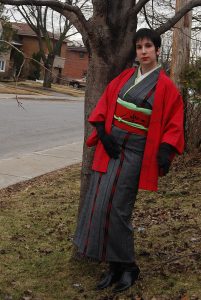
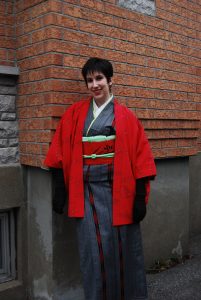
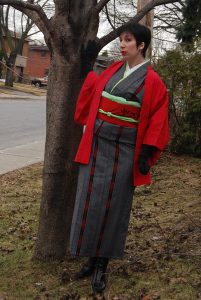
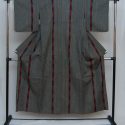
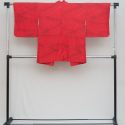
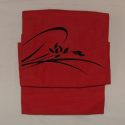
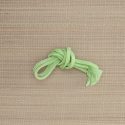
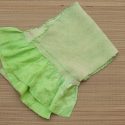






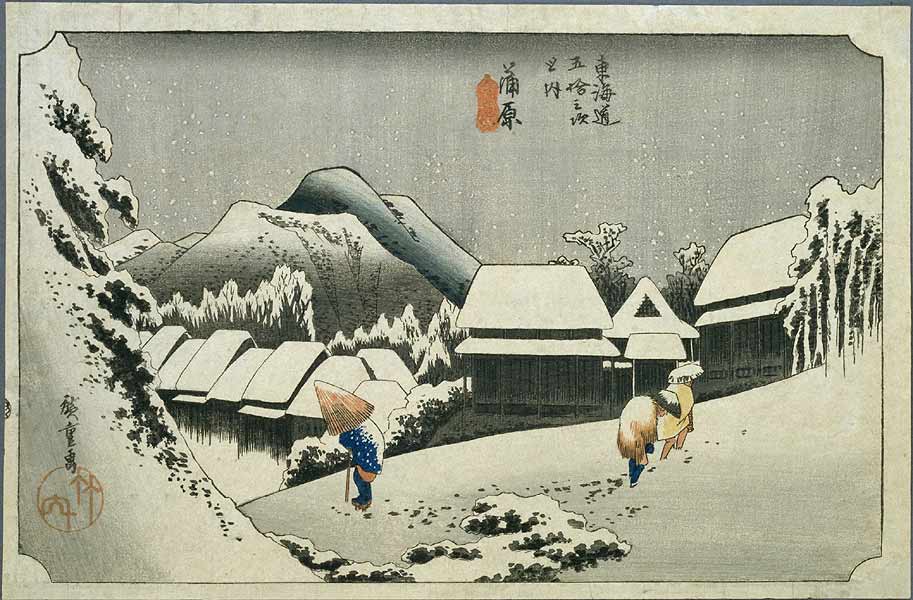








































 Bebe Taian
Bebe Taian CHOKO Blog
CHOKO Blog Gion Kobu
Gion Kobu